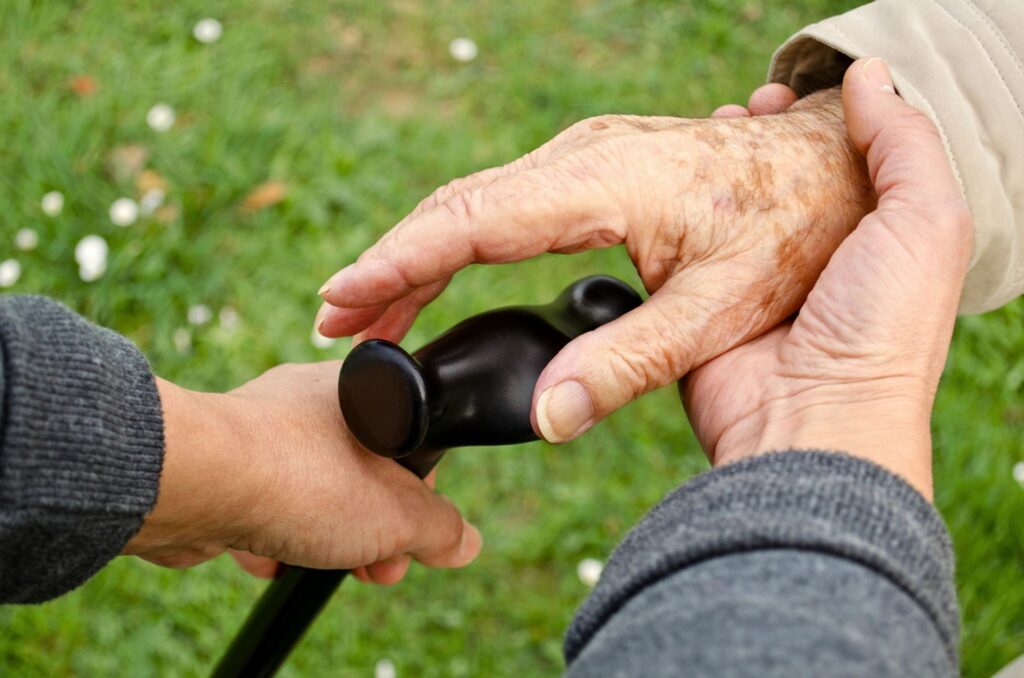When caring for a loved one, understanding the available care options can make a significant difference in their comfort and your peace of mind. Two commonly considered services are hospice and respite care, each offering distinct forms of support depending on the situation. However, families often find themselves uncertain about which to choose. In this post, we will explore the key differences between respite care vs hospice, their unique benefits, and how to determine the right time to consider each option.
At Shining Light Hospice, we are committed to providing compassionate, personalized care for families in Las Vegas. Our goal is to help you understand these services so you can make informed decisions for your loved ones. Let’s dive into the essential details that set hospice and respite care apart.
What is hospice care?
Hospice care is a specialized type of care designed for individuals who are nearing the end of life. It focuses on comfort, dignity, and quality of life rather than curing an illness. Hospice care can be provided in a patient’s home, a hospice facility, or a hospital, depending on their needs.
Goals of Hospice Care
Hospice care aims to provide relief from the symptoms and stress of a terminal illness. The focus is on improving the patient’s quality of life, ensuring they are as comfortable as possible in their remaining time. This includes:
- Pain management: Hospice teams are skilled at controlling pain and other uncomfortable symptoms like nausea, difficulty breathing, or fatigue.
- Emotional and spiritual support: Hospice care also addresses emotional and spiritual well-being, offering counseling to both the patient and their family.
- End-of-life planning: Hospice teams assist with legal and logistical planning, including advanced directives and coordinating end-of-life wishes.
Who Qualifies for Hospice Care?
Typically, hospice care is an option for individuals who have been diagnosed with a terminal illness and are expected to live six months or less. In most cases, the patient and their family choose hospice care when curative treatment is no longer effective or desired. Hospice is not about giving up hope—it’s about shifting the focus to comfort and dignity in the patient’s remaining time.
Services Provided in Hospice Care
Hospice care is a holistic service that includes:
- Medical support: Skilled nurses and doctors manage symptoms and pain.
- Palliative care: Ensuring that all the patient’s physical, emotional, and spiritual needs are met.
- Family counseling: Social workers and chaplains provide counseling and guidance for the family.
- Grief support: Many hospice programs, including Shining Light Hospice, offer grief support for family members after the patient’s passing.
Hospice care can be tailored to fit the individual needs of the patient, focusing on enhancing comfort and ensuring peace at the end of life.
What is Respite Care?
While hospice care is intended for end-of-life care, respite care is designed to offer temporary relief for caregivers. Caring for a loved one is a rewarding but often overwhelming responsibility. Respite care allows caregivers to take a much-needed break while ensuring their loved one receives proper care.
Goals of Respite Care
Respite care aims to provide short-term relief for family caregivers, giving them time to rest, recharge, or attend to personal matters. It can range from a few hours to several days, depending on the needs of the caregiver and the availability of services. This type of care is vital for preventing caregiver burnout and ensuring that the caregiver remains healthy and able to provide care in the long run.
Who Qualifies for Respite Care?
Respite care is available to anyone providing full-time care for a loved one. The patient does not need to have a terminal diagnosis to qualify for respite care, unlike hospice. It’s an option for caregivers who simply need a break or for those dealing with unexpected personal or family matters.
Types of Respite Care
There are several options for respite care depending on your location and preferences:
- In-home care: Caregivers can arrange for a nurse, personal care assistant, or companion to come to their home and provide temporary care.
- Facility-based care: Some hospices, nursing homes, or adult day care centers offer short-term stays or care programs.
- Adult day care programs: These provide supervised care in a group setting during the day, allowing caregivers time to work or rest.
Whether your loved one requires medical care or simply companionship, respite services can offer temporary relief with a trusted professional caregiver.
Key Differences Between Respite care vs Hospice
Understanding the primary differences between hospice and respite care will help you decide which service is appropriate for your situation.

Duration of Care
- Hospice: Hospice care is generally long-term and continuous until the patient passes away. It is specifically designed for patients who are in the final stages of a terminal illness.
- Respite: Respite care is short-term and provides temporary relief for caregivers. It can be as short as a few hours or as long as a few weeks, depending on the caregiver’s needs.
Primary Focus
- Hospice: The focus of hospice care is on providing end-of-life care that enhances the patient’s comfort and quality of life. It prioritizes pain management, symptom relief, and emotional and spiritual well-being.
- Respite: Respite care focuses on the caregiver, offering them a break while ensuring the patient continues to receive care. It is not tied to the patient’s end-of-life stage and is used at any point when a caregiver needs temporary relief.
Eligibility
- Hospice: Hospice care is available for patients diagnosed with a terminal illness who have six months or less to live.
- Respite: Respite care is available to any patient who is being cared for by a family member or professional caregiver, regardless of their health condition.
Caregiver’s Role
- Hospice: Hospice care involves a team-based approach with nurses, doctors, social workers, and chaplains, providing comprehensive care and emotional support to both the patient and their family.
- Respite: Respite care typically focuses on temporarily substituting the primary caregiver with a professional, allowing the caregiver to step away for a short period.
Costs and Coverage
- Hospice: Hospice care is often covered by Medicare, Medicaid, and most private insurance plans, as it is considered an essential service for terminal patients.
- Respite: Some respite care services may be covered by long-term care insurance or state programs, but coverage is typically more limited compared to hospice.
Benefits of Hospice Care
Hospice care provides a range of benefits to both the patient and their family:
Patient-Centered Care
Hospice care is deeply patient-centered, focusing on comfort, pain relief, and ensuring the patient’s final days are as peaceful as possible. Care plans are individualized to meet each patient’s specific needs, whether that involves medical intervention for pain management or emotional and spiritual support.
Holistic Support
Hospice care doesn’t just address physical symptoms. It offers emotional and spiritual care, helping patients and families cope with the complex emotions surrounding the end of life. Hospice care professionals include counselors, chaplains, and social workers who provide ongoing support.
Family Support
Families are an integral part of hospice care. The hospice team works with the family, providing education about the patient’s condition and how to manage symptoms. Additionally, families receive grief counseling before and after their loved one’s passing, ensuring they are supported throughout the entire process.
At-Home Comfort
Many patients prefer to remain in the comfort of their own home as they near the end of life. Hospice care can be delivered in the home, offering a familiar environment that provides peace and dignity for the patient. At Shining Light Hospice, we specialize in providing at-home hospice services in Las Vegas, allowing families to be with their loved ones in the place they are most comfortable.
Benefits of Respite Care
Respite care plays a vital role in maintaining the health and well-being of caregivers:
Support for Caregivers
Caregiving can be both physically and emotionally demanding. Respite care provides caregivers with an opportunity to rest, recharge, and focus on their own well-being. A short break can prevent burnout, allowing caregivers to return to their role with renewed energy and patience.
Improved Care for Patients
A well-rested caregiver is better equipped to provide high-quality care. Respite care ensures that the patient’s needs are still met while the caregiver takes time off. This continuity of care ensures that both the patient and caregiver benefit from the service.
Flexibility
Respite care services offer flexibility based on the caregiver’s needs. Whether you need a few hours of help or several days, respite care can be customized to fit your schedule. This makes it easier to manage other responsibilities without compromising your loved one’s care.
When to Choose Hospice or Respite Care
Deciding when to choose hospice or respite care depends on several factors:
Signs It May Be Time for Hospice Care
Hospice care is an option when a loved one’s illness progresses to the point where curative treatments are no longer effective. Signs include frequent hospitalizations, a significant decline in health, or a prognosis of six months or less to live. Hospice care allows the patient to transition into comfort-focused care.
When to Consider Respite Care
Caregivers should consider respite care if they find themselves overwhelmed, stressed, or in need of a break. Respite care can be scheduled in advance or in response to an urgent need, providing flexibility to handle life’s unexpected events.

At Shining Light Hospice, we understand that every situation is unique. Our experienced staff is here to help you determine which care option is best for your loved one.
Conclusion
In conclusion, hospice care and respite care offer distinct services designed to meet different needs. Hospice care focuses on end-of-life comfort and dignity, providing comprehensive support to both the patient and their family. Respite care, on the other hand, offers temporary relief to caregivers, ensuring their well-being while maintaining quality care for their loved one.
If you’re facing the difficult decision of choosing between hospice and respite care, Shining Light Hospice is here to help. Our compassionate team in Las Vegas is dedicated to guiding you through this process, ensuring that you and your loved ones receive the support you need during this challenging time.
If you’d like more information about our hospice or respite care services, please contact Shining Light Hospice at 702-906-0044 or visit us at 3265 N. Fort Apache Rd, Suite 150, Las Vegas, NV 89129. We are here to provide personalized care and guidance for you and your loved ones.






